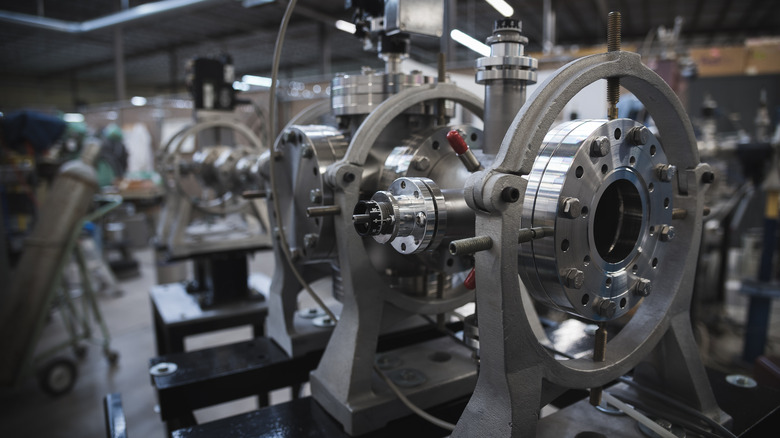Why The World's Largest Super Collider Was Abandoned
The Large Hadron Collider (LHC) is one of the more exciting developments in science that has caught the eye of the general public. The European Organization for Nuclear Research first fired up the LHC on September 10, 2008, and it has since remained the most powerful and largest particle accelerator to ever be made (via CERN). Stretching out a vast 27 kilometers just outside of Geneva, Switzerland, the enormous machine is designed to crack open the deepest mysteries of the quantum world itself.
As stated by How Stuff Works, the machine achieves this by colliding together two beams of ions and protons close to the speed of light and then record the smashed-up aftermath. Arguably, the biggest achievement so far from the LHC was the discovery of the Higgs Boson, the so-called "God particle," back in July 2012. As said by Smithsonian magazine, the find was enormous and helped shape our understanding of the quantum world. But, it was one discovery that could have been found 20 years prior, if the planned particle accelerator in Texas hadn't been canceled, according to Texas Monthly.
The Super Collider was plagued with budget problems
Texas was once home to one of the most ambitious particle accelerator projects in American history. With design starting in 1983, and funding approved by Reagan in 1987, the Superconducting Super Collider (SSC) was to be built just outside of Waxahachie, Texas, and would have fulfilled the same role as the LHC. Well, the same role, but much more effectively, according to Scientific American.
For starters, this accelerator was going to be much larger than the LHC's 27 kilometers — taking up a staggering 87.1 kilometers. It would have also been five times more powerful than the LHC, and 20 times more powerful than every other particle accelerator that was planned in history. And, it would have brought in up to 8,000 new jobs into the area, according to Texas Monthly.
So how did this project fail? A big reason was the budget. As explained by Scientific American, the project never got enough funds. Foreign governments promised $2.6 billion that never materialized. Texas' government itself only delivered $400 million out of a promised $900 million. The cost was simply too high for many to bear.
Enthusiasm and support waned
Particle accelerators enjoy both scientific and cultural enthusiasm. Everyday people are awed by the immense complexity of the machines and their promises for technological advancement. Some even come up with strange conspiracy theories surrounding accelerators. This enthusiasm helps drive many science projects and was a notable part of why Texas' Super Collider looked promising — until that excitement disappeared that is.
As noted by Scientific American, the Superconducting Super Collider (SSC) initially had a lot of support from both the Texas government and local communities. But once construction began, reality hit and State enthusiasm fell through.
In 2013 Texas Monthly talked with Roy Schwitters, former director of the SSC, about why the project fell through. "By 1992 the Cold War was over. From the end of World War II to then, we had an existential threat from a society that was damn good at science and math. It led to the space program and physics research and education that supported us through grad school. That threat is no longer with us. And society is still deliberating how to deal with that."


